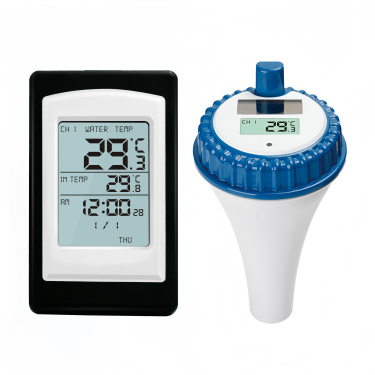Aquarium Thermometer: Essential Tool for Monitoring Water Temperature

# Aquarium Thermometer: Essential Tool for Monitoring Water Temperature
## Why Water Temperature Matters in Your Aquarium
Maintaining the proper water temperature is one of the most critical aspects of aquarium care. Fish and other aquatic creatures are ectothermic, meaning they rely on their environment to regulate their body temperature. Even slight fluctuations outside their ideal range can cause stress, weaken immune systems, and potentially lead to fatal consequences.
## Types of Aquarium Thermometers
### 1. Glass Thermometers
Traditional glass thermometers with mercury or alcohol are affordable and accurate. They typically attach to the inside of the aquarium with suction cups.
### 2. Digital Thermometers
These provide quick, easy-to-read displays and often come with probes that can be placed in different areas of the tank. Some models offer remote monitoring capabilities.
### 3. Stick-on Thermometers
Applied to the outside of the aquarium glass, these thermometers are convenient but may be less accurate than other types due to external temperature influences.
### 4. Infrared Thermometers
Non-contact devices that measure surface temperature instantly. While convenient for spot checks, they don’t provide continuous monitoring.
## Proper Placement of Your Aquarium Thermometer
For accurate readings:
• Place the thermometer away from heaters or filters
• Position it in an area with good water circulation
• Avoid direct sunlight which can affect readings
• Consider multiple thermometers for large aquariums
## Maintaining Optimal Temperature Ranges
Different species require specific temperature ranges:
• Tropical fish: 75-80°F (24-27°C)
• Coldwater fish: 60-70°F (15-21°C)
• Marine reef tanks: 76-82°F (24-28°C)
Always research the specific needs of your aquatic inhabitants and adjust your heater accordingly based on thermometer readings.
## Troubleshooting Temperature Issues
If your thermometer shows abnormal readings:
Keyword: aquarium thermometer
1. Verify the thermometer’s accuracy by testing it in known temperature water
2. Check for equipment malfunctions (heaters, filters)
3. Ensure proper water circulation
4. Consider room temperature fluctuations
## Choosing the Right Thermometer for Your Setup
When selecting an aquarium thermometer, consider:
• Tank size and type (freshwater, saltwater, reef)
• Desired accuracy level
• Ease of reading
• Budget
• Additional features (alarms, memory functions)
Investing in a reliable aquarium thermometer is one of the simplest yet most important steps you can take to ensure the health and longevity of your aquatic ecosystem. Regular monitoring and prompt adjustments will create a stable environment where your fish and plants can thrive.